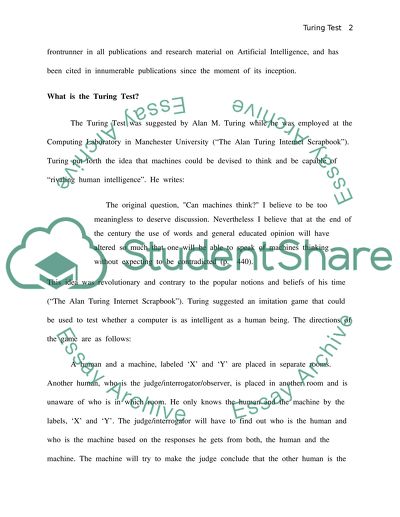Cite this document
(“Developing Artificial Intelligence Essay Example | Topics and Well Written Essays - 1500 words”, n.d.)
Retrieved from https://studentshare.org/information-technology/1429750-what-is-the-turing-test-and-why-is-it-so-difficult
Retrieved from https://studentshare.org/information-technology/1429750-what-is-the-turing-test-and-why-is-it-so-difficult
(Developing Artificial Intelligence Essay Example | Topics and Well Written Essays - 1500 Words)
https://studentshare.org/information-technology/1429750-what-is-the-turing-test-and-why-is-it-so-difficult.
https://studentshare.org/information-technology/1429750-what-is-the-turing-test-and-why-is-it-so-difficult.
“Developing Artificial Intelligence Essay Example | Topics and Well Written Essays - 1500 Words”, n.d. https://studentshare.org/information-technology/1429750-what-is-the-turing-test-and-why-is-it-so-difficult.


